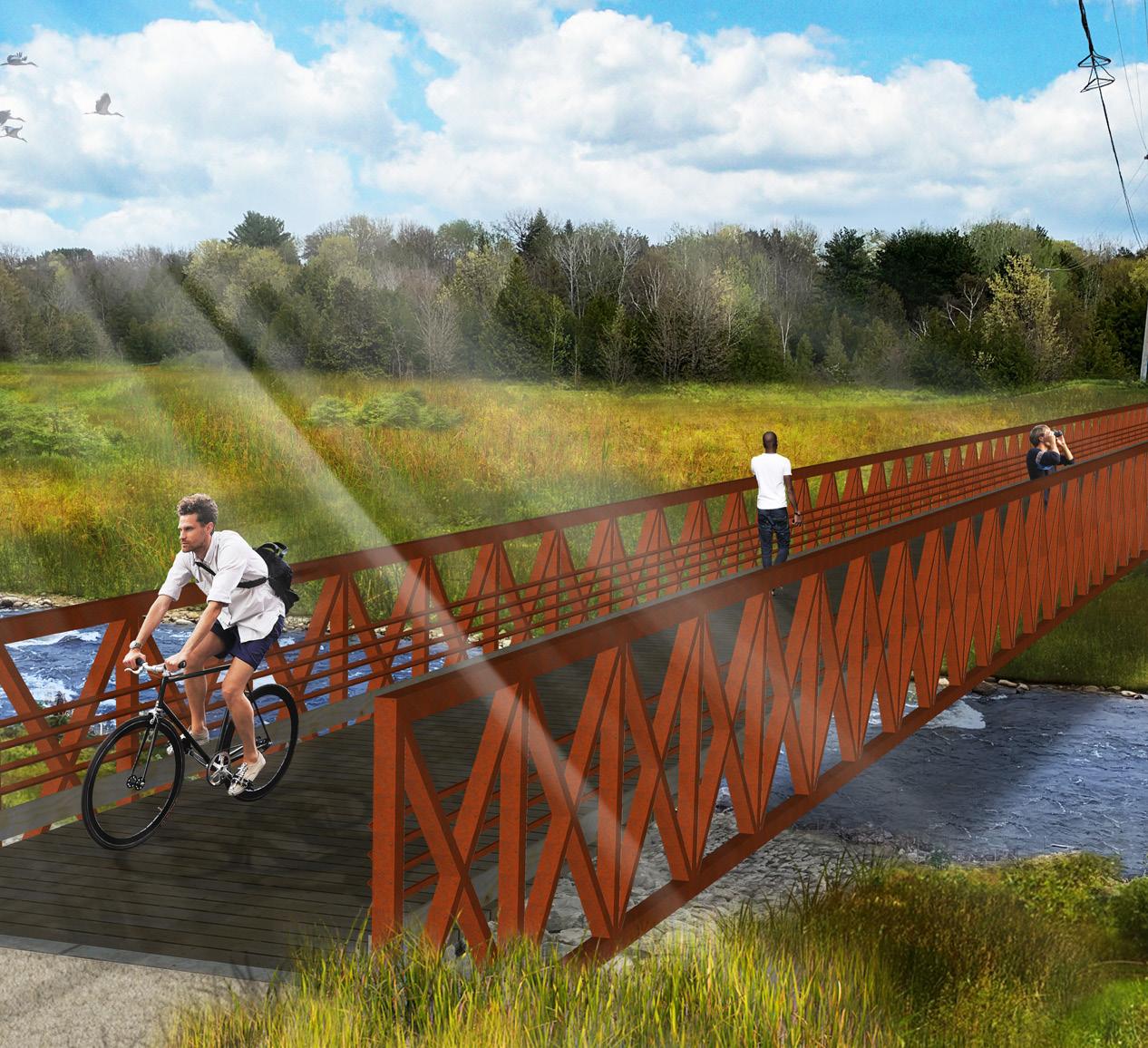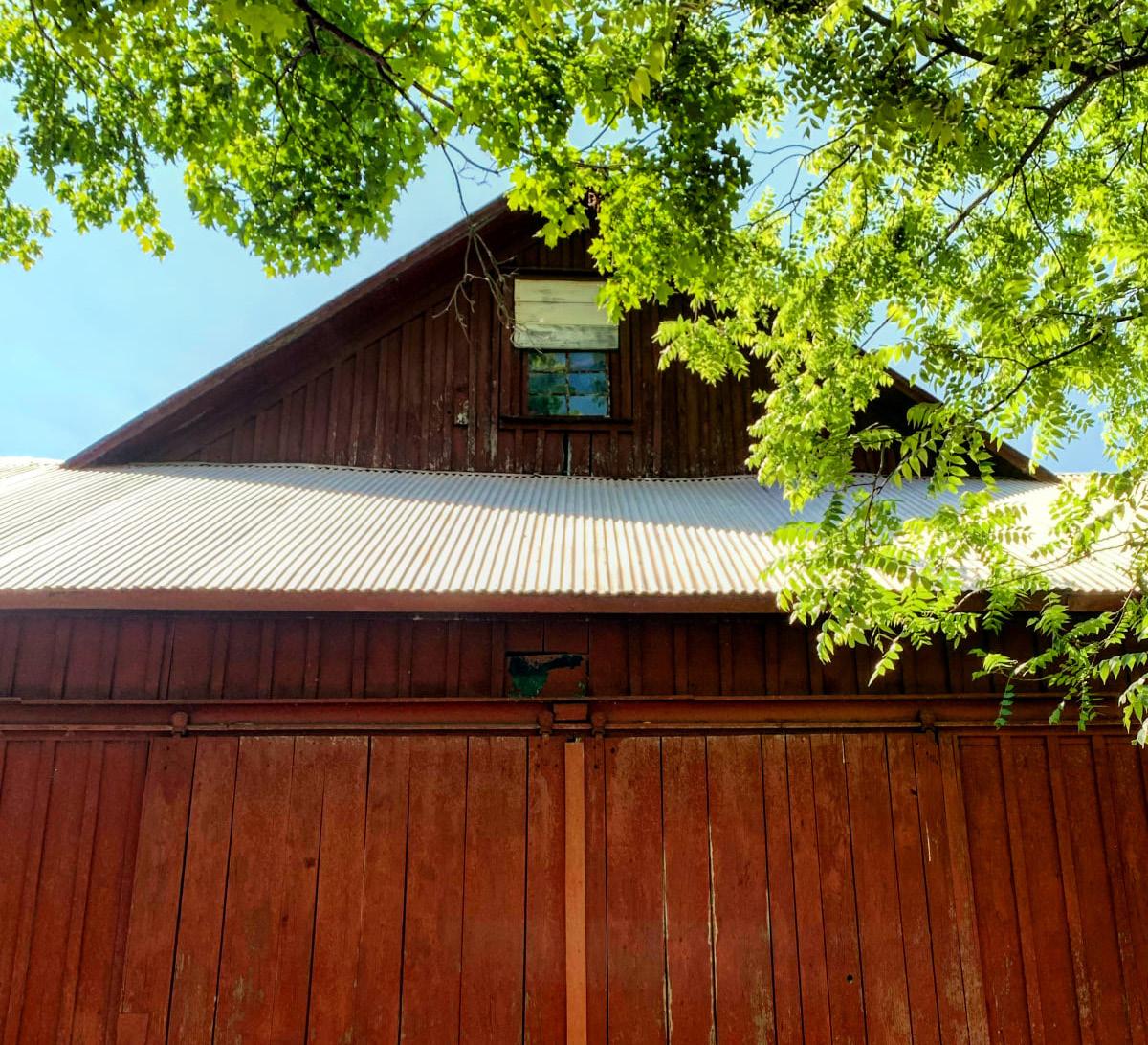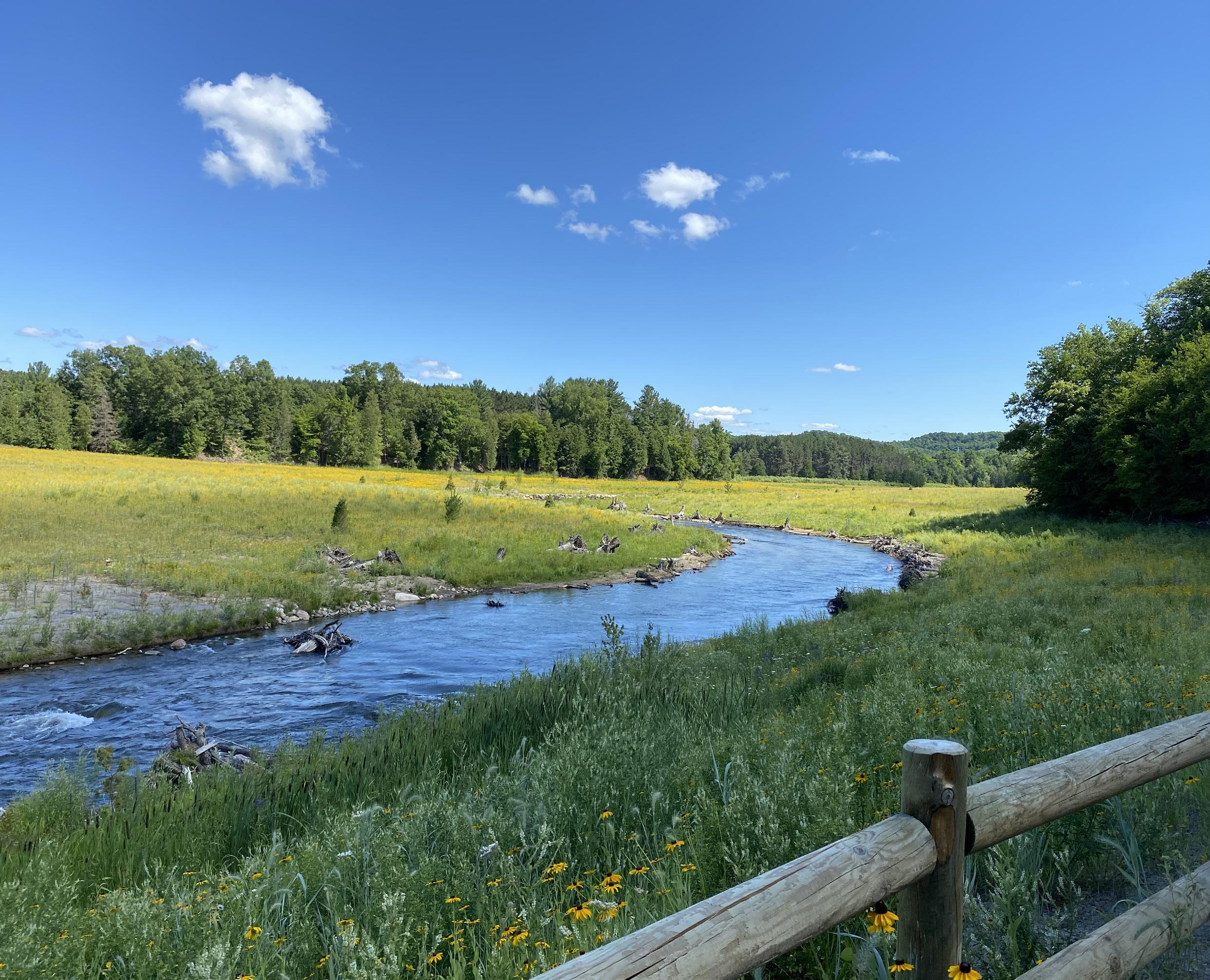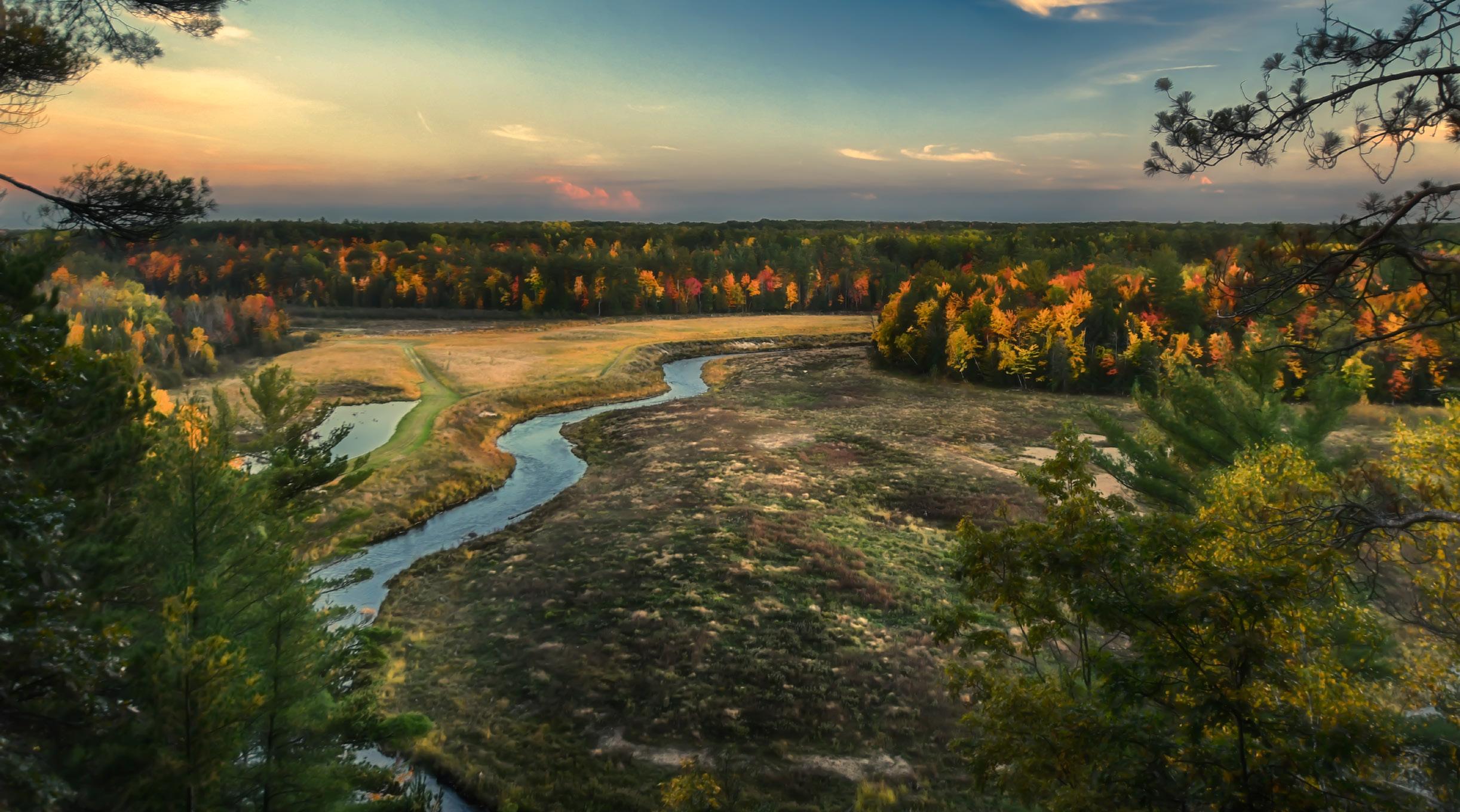CONNECTING TO THE FUTURE:
The Ottaway Crossing and The Great Lakes Incubator Farm









OUR MISSION: to lead, facilitate and inspire exploration, appreciation, conservation and restoration of our natural world.
The Grand Traverse region is home to some of the most remarkable natural and farm lands in the United States. For over 81 years, it has been the privilege of the Grand Traverse Conservation District to steward these natural resources to ensure our community thrives, with health and vitality for all the wildlife, plants, and humans who call it home.
Since 1941, we have been working to connect the community to the land in an active way through restoring natural areas, training future generations of conservation leaders, supporting sustainable, local agriculture, and stewardship of the Boardman-Ottaway River.
We now have the unique opportunity to not only connect all aspects of our work, but also enhance how you engage with the natural world with two remarkable projects.
Our goal, with your support, is to create an innovative incubator farm on the east side of the Boardman-Ottaway River and build a footbridge that spans the river where the Sabin Dam once served as an east-west crossing, providing the missing connection to over 10 miles of trail, a userfriendly trail loop within the Natural Education Reserve (NER), and access to the new incubator farm.

The Boardman River Nature Center recently welcomed its 100,000th visitor.

Imagine a place where generations of families can experience the natural world just minutes from downtown Traverse City. Where parents, grandparents, children, and friends can gather to learn, relax, and recharge. The entire family can experience a world-class Nature Center and then enjoy a walk through nearly 10 miles of trails; old friends can catch up and enjoy unparalleled beauty on a bike ride or while fishing a new stretch of the Boardman-Ottaway River; grandparents can experience hands-on stewardship alongside grandchildren while immersed in local agriculture; and young farmers can find support and resources while learning how to make an environmentally responsible living from the land and feeding our community.

At the turn of the 19th century, four hydro-electric dams were built to harness the power of the Boardman-Ottaway River in order to supply a growing Traverse City with electricity:
• Boardman Dam (1894)
• Sabin Dam (1907)
• Keystone Dam (1908; washed out in 1961)
• Brown Bridge Dam (1921)
Grand Traverse Band of Ottawa and Chippewa Indians elder, Hank Bailey, speaking to the Traverse City Record-Eagle
Odawa Anishinaabek people have lived in our region since long before European settlers arrived, and they depended on the rivers for fishing, traveling, and ceremonial practices. Colonization from early settlers disrupted the connection that Anishinaabek had with the Boardman River.
While once the most efficient way to generate electricity for our community, over time the dams began to deteriorate. In the late 1960s, Consumers Energy left the hydroelectric business on the Boardman -Ottaway River and sold the 310-acre property containing Sabin and Boardman Dams to Grand Traverse County for $1. Today, this land is Grand Traverse County’s Natural Education Reserve (NER).
“Rivers are the veins of the Earth, and Anishinaabek have always lived among the land and water in good relation, because we recognize that spirit.”
Over his lifetime, Hank has watched the river shift toward rebirth after a century of degradation through colonial extraction. This is the largest dam removal effort in Michigan’s history and one of the most significant in the Great Lakes Basin.

Removing the dams reconnected 160 miles of river and tributaries that were fragmented for the past 150 years.
In 2009, both the City of Traverse City and Grand Traverse County decided to remove the three remaining nonoperational dams. The Conservation District was heavily involved in the dam removal process, serving as land managers for both the County and the City since 1992this partnership still exists today.

In 2018, Sabin Dam, which sat within the NER, was the last dam to be removed. This dam had acted as a highlytrafficked footbridge that connected the east and west sides of the river, allowing anglers, hikers, and NER visitors access to all 525 acres of remarkable property, which includes nearly five miles of Boardman-Ottaway River. With the removal of Sabin Dam, the community’s ability to cross the river was severed.
Without a way to cross the Boardman-Ottaway River, NER users must get in their cars to drive either north or south via a road bridge to access the trails on the other side of the river. With no continuous trail loop, visitors on foot must backtrack in order to experience the entirety of the NER, causing trail congestion and a less-than-ideal user experience.
Bailey is excited for the river to be a river again. “The river has a right, just as we do, to thrive.” The restoration of the Boardman River honors that the river is ‘more than just water.’ “Anishinaabek teachings tell us to honor the water as a spirit, as you would any other living being. When the river is sick, everything around it becomes sick too.”
Grand Traverse Band of Ottawa and Chippewa Indians drumming and tobacco ceremony to celebrate the reconnection of the river after dam removal.8.6% of farmland
The United States has a population of more than 331 million people, yet only 1.4% of these are farmers, and these numbers are decreasing at an alarming rate. The average American farmer is nearly 60 years old, and the long-term trend of aging in this sector shows no sign of slowing as every year, fewer and fewer young people step up to assume careers in agriculture, and retiring farmers leave their land to developers.


3,672 acres
in the United States is operated by those 34 and younger of Grand Traverse County farmland lost from 2012-2017
Source: 2017 United States Department of Agriculture Census of Agriculture
The Grand Traverse region is no exception. Although we are fortunate to boast nationally-significant farmland protection programs that make it possible for farmers to stay in agriculture, the unprecedented development pressures squeezing our region’s natural and farm lands are unrelenting.
While there are significant numbers of people interested in pursuing agriculture, the barriers to entry in this arena are
“As a sixth generation farmer and someone who has taught and learned from farmers on four continents, I have come to appreciate that agriculture is fundamentally an apprenticeship-based career. In the best of cases, a farmer has sixty or seventy chances in a lifetime to figure out how to get it right. In today’s world of low agricultural margins and high land values, it is more important than ever to give beginning farmers all the tools they need for success at the very beginning of their careers. Unfortunately, many aspiring farmers are unable to connect with farmers who can teach them the necessary skills to make a living off the land--moreover, the regenerative and diversified agriculture practices that most closely align with the interests of our local residents are largely a lost art in this region. The Incubator Farm will help to educate a new generation of farmers and will allow our farmers to learn anew the practices that will enhance our local food economy.”
 - Isaiah Wunsch, Old Mission Peninsula
- Isaiah Wunsch, Old Mission Peninsula
Our region’s average farmland cost is $4,500/acre, and the cost to purchase or lease land is only the beginning in terms of required investment. Equipment, licensing, and other necessary start-up costs are often so great that they make realizing a profit from farming an unsolvable financial puzzle.

What is an Incubator Farm?
A land-based, multigrower project that provides aspiring and beginning farmers access to land, infrastructure, training, and technical assistance.
The Conservation District is committed to connection and is continually working to enhance how the community engages with the natural world. After years of careful study to understand the impacts of dam removal, the Conservation District is eager to reconnect the community with the natural beauty and exceptional recreational opportunities of the NER and beyond.
A 200-foot pedestrian bridge will span the Boardman-Ottaway River at the location of the former Sabin Dam, providing access from the Grand Traverse Conservation District’s Boardman River Nature Center on the river’s west side to the 3 miles of recreational trails on the east, including the TC Bay Soccer Complex and the Great Lakes Incubator Farm. The structure will span the entire floodplain at a height of over 30 feet to allow wildlife, anglers, and paddlers unfettered access beneath.

Named the Ottaway Crossing, in honor of the river’s original name and the indigenous community, this impressive feat of engineering will encourage walkers, bikers, anglers, and adventurers to explore nearly 10 miles of trails and the natural beauty of the NER.
We will continue the thoughtful and thorough restoration of the surrounding riparian lands. Our work to stabilize riverbanks, seed bottomlands with native plants, and control invasive species will be more important than ever in order to make the NER a spectacular destination for the community.

Along with creating miles of trail connections, the Ottaway Crossing will provide access to GTCD’s newest program located on the east side of the river at Grand Traverse County’s historic Meyer Farm property. The grant-funded purchase of this 15-acre farmstead was made by Grand Traverse County with the intention that the property maintain its agricultural history and provide benefit to the public.
The Conservation District is honored by the opportunity to host our newest program at this beloved location.
The Great Lakes Incubator Farm program is an active, land-based agricultural program that fosters the growth and development of new and beginning farmers in northwest lower Michigan.
Utilizing the Meyer Farm property, the Incubator Farm will reduce the risk to an agricultural startup by providing business development services and agricultural management, mentoring, and training. This low-risk learning environment will help develop and foster new agriculture producers who will in turn:
• Assist in succession of local farmland
• Create local farming models based on principles of regenerative agriculture
• Build resilience in the local food economy

• Foster a lasting culture of health and wellness
The program will lower common barriers that typically deter individuals from starting a farming operation by giving them the opportunity and flexibility to create an agricultural business and gain expertise as they grow. We will offer access to the resources
These two projects help fulfill a promise we made to this community over 81 years ago. Since 1941, the Grand Traverse Conservation District has been serving Grand Traverse County by providing gateways to the natural world. We actively connect the community to the land by restoring natural areas; training future generations of conservation leaders; and caring for the BoardmanOttaway River.
and tools needed to foster farmers who will be stewards of our region’s natural resources. Eventually, participants will transition to an independent resilient and successful farm operation.
Mirroring the Boardman River Nature Center on the river’s opposite side, the Incubator Farm will be a welcoming demonstration location where community members and the agriculturally curious can gather to learn about natural resource conservation, agriculture, soil health, food, farming systems, and innovative and regenerative practices that benefit both people and planet.
Together, the Ottaway Crossing and Great Lakes Incubator Farm will bring the potential of the NER and the mission of the Conservation District to fruition, facilitating a more comprehensive experience. These new recreational and educational projects will offer all members of our community the opportunity to experience the connection between working lands, agriculture, environmental stewardship, and natural resource conservation.
Conservation districts were first established by the federal government in 1937 to support farmers around the United States suffering the devastating effects of the soil erosion crisis known as the Dust Bowl. The Grand Traverse Conservation District eventually evolved to become the broader communityserving organization it is today, offering educational programming and providing services to county residents through programs such as the Invasive Species Network, Produce Safety Program, Forestry Assistance Program, and the Michigan Agricultural Environmental Assurance Program, as well as providing public natural area management through its Parklands Program and restoring and protecting the Boardman-Ottaway River.
 Boardman River Nature Center
Future Location of Ottaway Crossing (footbridge)Former Sabin Dam Site
Great Lakes Incubator Farm
Boardman River Nature Center
Future Location of Ottaway Crossing (footbridge)Former Sabin Dam Site
Great Lakes Incubator Farm
The Boardman-Ottaway River:
182,800 acres
The Boardman-Ottaway River watershed contains 182,800 acres of land spread over 287 square miles

A state-designated Natural River and Blue Ribbon trout stream, the Boardman-Ottaway River is considered one of the top 10 trout streams in Michigan and one of the most outstanding natural features of the Grand Traverse region.
The Grand Traverse Conservation District has been caring for the Boardman-Ottaway River since 1991 after a survey revealed more than 600 erosion sites along its banks, 85% of which were attributed to human activity.
Through our Boardman-Ottaway River Project - and with the help of numerous local, state, and federal partners - we have restored more than 300 of these sites to date.
As stewards of this incredible natural treasure, we are excited by the opportunity to deepen our caretaking of the Boardman-Ottaway River with the Ottaway Crossing project.
200 miles 30% of river and stream tributaries of the surface water input into Grand Traverse Bay
During the dam removal phase of the past decade, the Grand Traverse Conservation District expanded our stewardship of the Boardman-Ottaway River and its surrounding natural lands, as well as our promise to connect the community to these incredible natural treasures. We must continue this trajectory and fulfill our commitment to our community and to the natural resources in our care.

Our opportunity to lease the historic Meyer Farm property to develop the Great Lakes Incubator Farm comes at a time when regional agricultural land has never been more threatened and the need for farmers invested in innovative, future-thinking methods has never been more urgent.
Campaign Budget
$842,616
Great Lakes Incubator Farm
$222,500
Campaign & Program
$1,236,460
Ottaway Crossing Bridge
$500,000
Funds for Longterm Stewardship
$2,801,576
Total Budget
With your support, we can connect all aspects of our work and enhance how our community engages with the natural world.
Your generosity will provide:
• Access to stunning natural beauty and high-quality recreational opportunities just minutes from downtown Traverse City
• Healing to the river and its surrounding landscape
• Educational programs at the Natural Education Reserve and the new Great Lakes Incubator Farm
• Opportunity, education and resources to support our region’s next generation of farmers
• Connection of diverse hiking trails

You can make an outright gift or pledge your support. Contributions may be eligible for tax deductions. Checks can be made out to GTCD or Friends of the Grand Traverse Conservation District, a 501(c)(3).
Stock can be donated and may qualify for a charitable tax deduction. If the stock has appreciated in value, you may avoid paying capital gains upon transferring it to The Conservation District.
To donate or learn more visit: natureiscalling.org/campaign or contact:
Irene Stibitz
Community Engagement Specialist
Grand Traverse Conservation District
1450 Cass Rd. Traverse City, MI 49685
t: 231 941 0960 x 10
istibitz@gtcd.org
You can create a meaningful legacy in northwest Michigan through a planned gift. Planned giving options include bequests, charitable gift annuities, charitable remainder trusts, life insurance policies, retirement plans, or other arrangements.
Koffi Kpachavi, Executive Director
Irene Stibitz, Community Engagement Specialist
Steve Largent, Conservation Team Coordinator
Friends of the Grand Traverse Conservation District